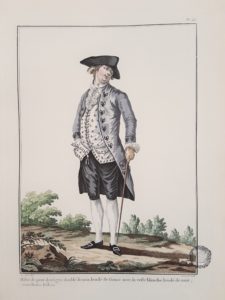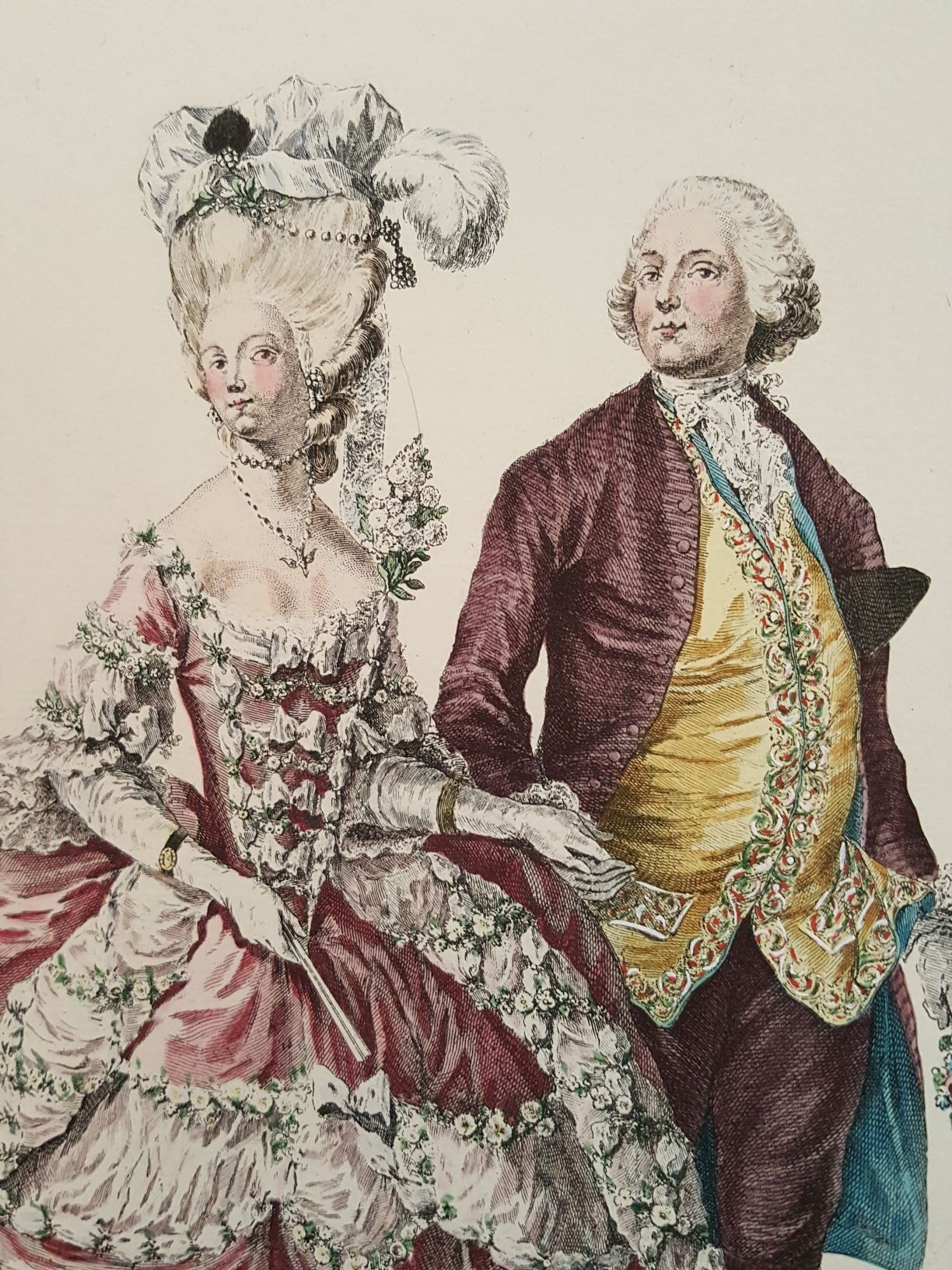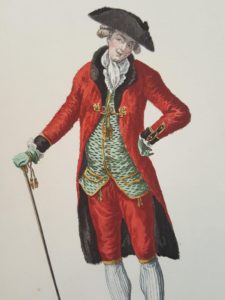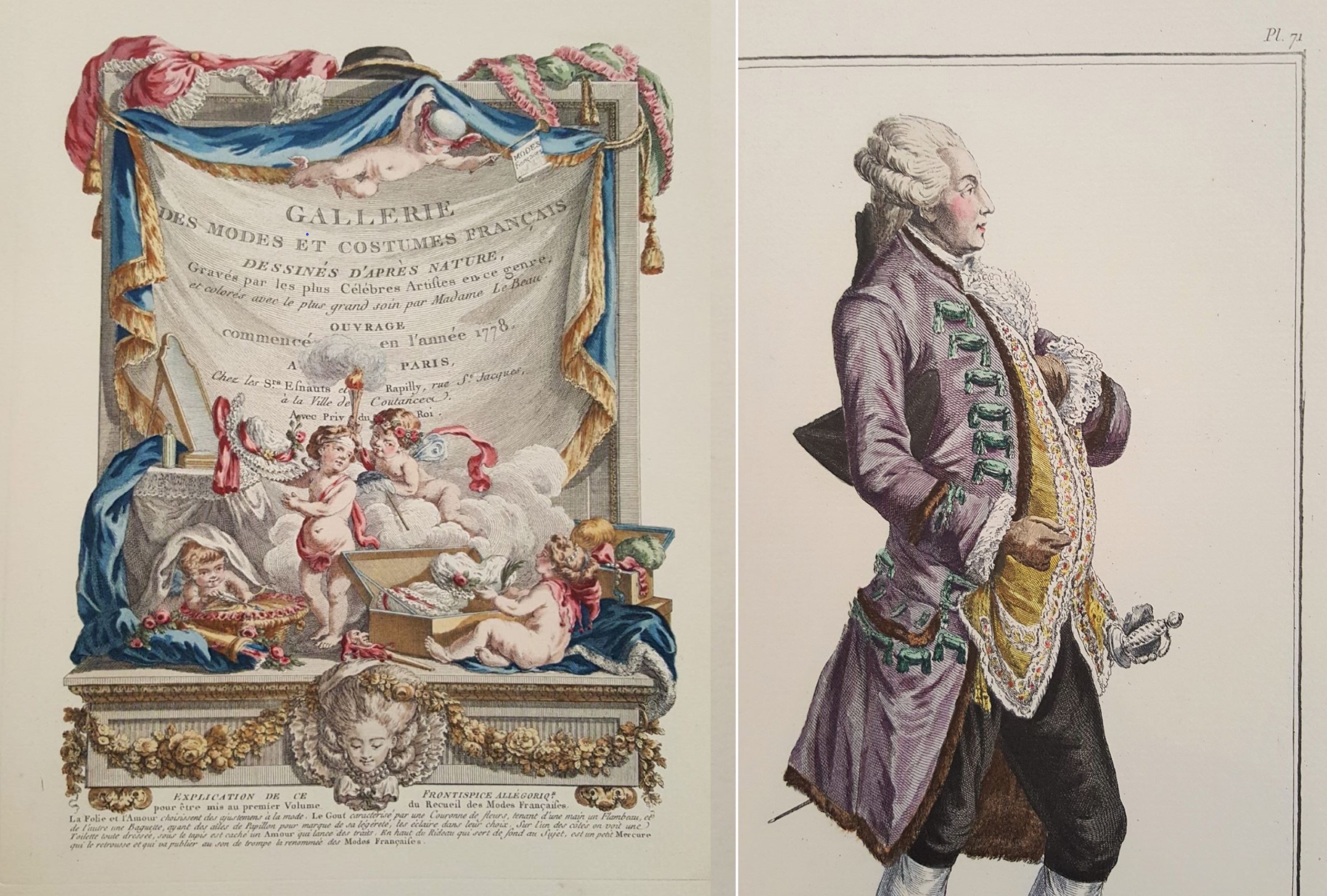
Man in knee breeches, coat, three cornered hat, and waistcoat. Vol.4. pl. 162
Marie Antoinette and her entourage of costumers were obsessed with discovering the latest fashion trends in clothing, accessories and hairstyles. Despite the predominance and popularity of French fashion trends in the eighteenth century, the scarcity of printed fashion news and illustrations led to the publications of the first fashion plates in early British magazines for women, and shortly afterwards in French publications. In this same time period, men’s clothing, made of sumptuous fabrics with great attention to details, were just as elaborate and changed as quickly as women’s clothing did. To be properly attired, a gentleman had to wear an embellished three piece suit of knee breeches, a matching coat and waistcoat (vest).

Woman and man in wigs, elegant and rich clothing, man wearing embellished yellow waistcoat.
Galerie des modes began in the late 1700s, a period when France was the fashion capital of the Western world. What set these illustrations apart was that they were drawn ”after nature”, engraved by celebrated artists and then hand-colored. They were drawn from observation- what was actually seen worn on the streets and at public venues in Paris; in parks, theaters, at fashionable dressmakers and tailors during the latter part of the eighteenth century.

Man in waistcoat under matching coat and breeches. Vol.4. pl.63
Between 1911 and 1914, Paul Cornu and Emile Lévy published a reproduction of 325 images from Galerie des Modes series complete with hand-colored plates as well as descriptions from the eighteenth-century periodicals and literature these fashion plates were printed in. Galerie was read by fashionistas, both in France and abroad, and is known as one of the “the best and largest” fashion plate series of the eighteenth century.
Two plates from this publication are currently on view in Cooper Hewitt’s exhibition featuring waistcoats, Embroidered and Embellished, part of Nature by Design: Selections from the Permanent Collection. that complements the exhibition Nature—Cooper Hewitt Design Triennial
Elizabeth Broman is a Reference Librarian at the Cooper Hewitt, Smithsonian Design Library.
